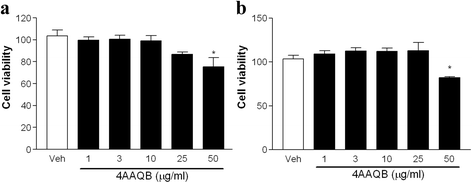Antrodan, a unique protein-bound polysaccharide derived from the fungal mycelia of Antrodia cinnamomea, has been reported to exhibit antitumor and anti-metastatic effects on Lewis lung carcinoma (LLC) cells through direct action and immunomodulation in vitro. In this study, we investigated the combined treatment of antrodan with an anti-cancer drug-cisplatin-and its underlying molecular mechanisms of action in a mouse xenograft tumor model. C57BL/6 mice were implanted (s.c.) with LLCs for nine days, before administration with only antrodan (20 mg/kg and 40 mg/kg; p.o.) daily, only cisplatin (1 mg/kg; i.p.) twice per week, or a combination of both for an additional 28 days. As expected, antrodan on its own significantly inhibited metastasis of lung and liver tissues, while treatment with cisplatin only merely inhibited metastasis of the liver. Antrodan exhibited efficient adjuvant therapy in combination with cisplatin, by inhibiting the activities of the plasma urokinase plasminogen activator (uPA) and the liver matrix metalloproteinase 9 (MMP-9), as well as by inhibiting the phosphorylation of p38 and extracellular signal-regulated kinase 2 (ERK2) in lung and liver tissues. In addition, antrodan effectively ameliorated cisplatin-induced kidney dysfunction when treated combinatorially, as evidenced by a decrease in cisplatin-induced blood urea nitrogen (BUN) levels in plasma and in the level of p38 phosphorylation in the kidney. Mechanistically, the actions of antrodan on its own involved (i) reducing the activities of uPA and MMP-2 and -9 in plasma; (ii) reducing protein expression of MMP-2/9, and the phosphorylation of signal transducer and activator of transcription 3 (STAT3) and mitogen-activated protein kinases (MAPKs), including extracellular signal-regulated kinases (ERKs), c-Jun N-terminal kinases (JNKs), and p38 in lung and liver tissues; and (iii) enhancing immune system functions resulting in the promotion of an anti-metastatic response through immunomodulation, by increasing interferon-γ (IFN-γ) levels and decreasing interleukin-6 (IL-6) levels in plasma. These results demonstrated that antrodan provides a novel, complementary therapeutic strategy against cancer metastasis, by attenuating the activities of MMP-2 and -9 through the modulation of STAT3/MAPK/ERK/JNK signaling pathways, and of the host’s immune system.
Health News
Antrodia cinnamomea is an indigenous medicinal mushroom in Taiwan, commonly used for the treatment of cancers and inflammatory disorders. 4-acetylantroquinonol B (4AAQB) is one of the active component isolated from the mycelium of A. cinnamomea. However, whether 4AAQB exhibits anti-inflammatory effect is not clear.
Antrodia cinnamomea (AC) is a medicinal fungal species that has been widely used traditionally in Taiwan for the treatment of diverse health-related conditions including cancer. It possesses potent anti-inflammatory and antioxidant properties in addition to its ability to promote cancer cell death in several human tumors. Our aim was to improve the anticancer activity of AC in hepatocellular carcinoma (HCC) through its cocultivation with ginger aiming at tuning the active ingredients. HCC cell lines, Huh-7 and HepG2 were used to study the in vitro anticancer activity of the ethanolic extracts of AC (EAC) alone or after the cocultivation in presence of ginger (EACG). The results indicated that the cocultivation of AC with ginger significantly induced the production of important triterpenoids and EACG was significantly more potent than EAC in targeting HCC cell lines. EACG effectively inhibited cancer cells growth via the induction of cell cycle arrest at G2/M phase and induction of apoptosis in Huh-7 and HepG2 cells as indicated by MTT assay, cell cycle analysis, Annexin V assay, and the activation of caspase-3. In addition, EACG modulated cyclin proteins expression and mitogen-activated protein kinase (MAPK) signaling pathways in favor of the inhibition of cancer cell survival. Taken together, the current study highlights an evidence that EACG is superior to EAC in targeting cancer cell survival and inducing apoptotic cell death in HCC. These findings support that EACG formula can serve as a potential candidate for HCC adjuvant therapy.





